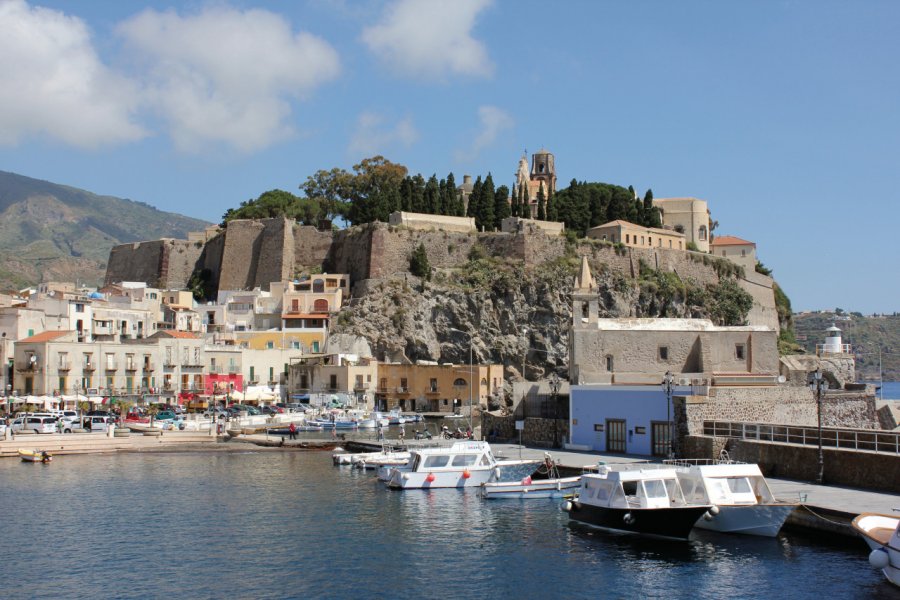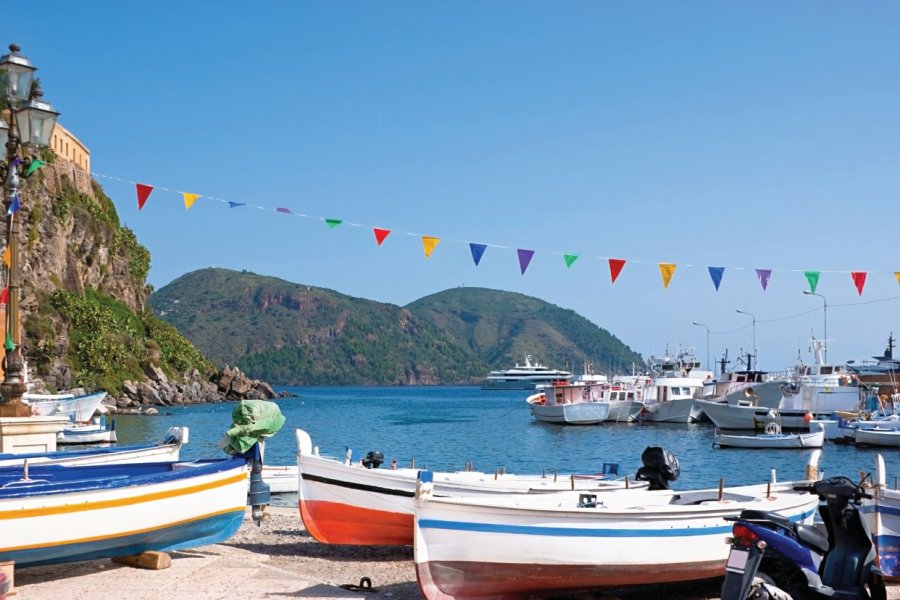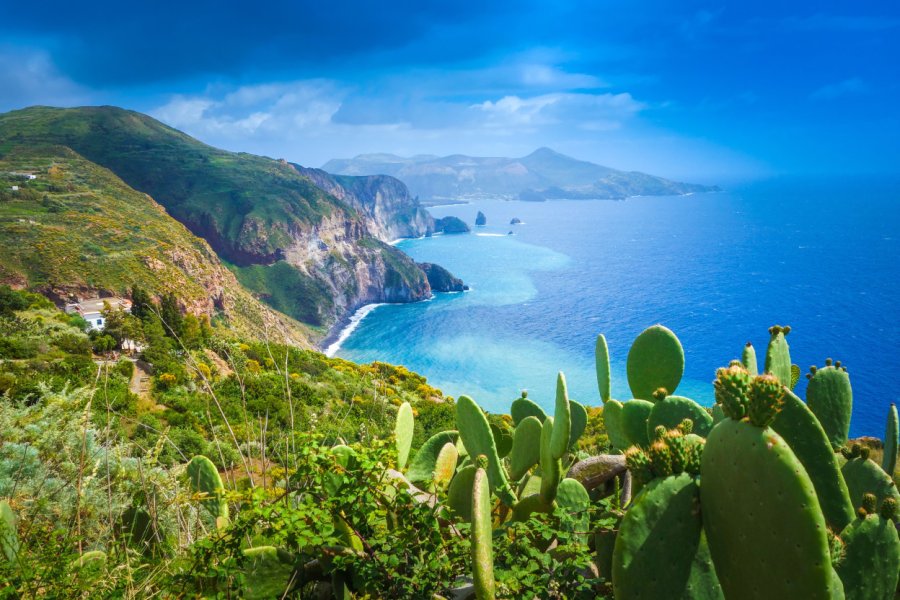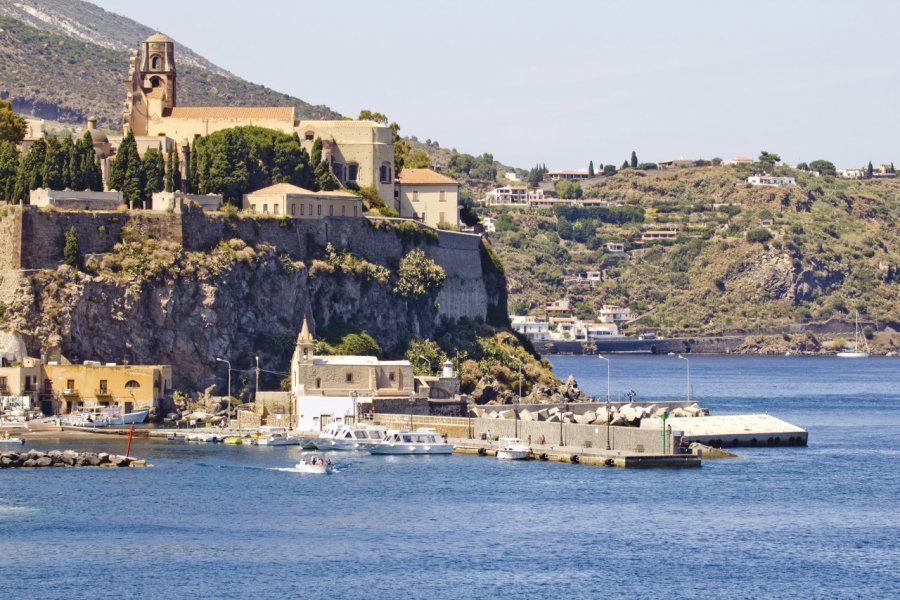Travel Guide Lipari
Find an accommodation
Advertising
"A floating island, a bronze wall and splendid smooth and steep cliffs." This is how Homer described Lipari, the ancient Meligunis in Greek times, the largest and most populated of the Aeolian Islands (37.6 km2 and 11,500 inhabitants). Populated since the Neolithic (4000 BC), it was once the main center of the obsidian trade until the times of ancient Rome. Hundreds of obsidian artifacts from Lipari have been found in 25 archaeological sites in Italy, Sardinia and even in the south of France, Malta and Croatia. During the war, it was used to house enemy prisoners of the Fascist regime. If obsidian made its wealth yesterday, it is the pumice stone, demanded today by all the high-tech industries (for television and computer screens), which now makes its fortune. The pumice deposits cover more than 22% of the island's territory. They are found between Canneto and Acquacalda, on the Pelato and Chirica mountains and part of the Sant Angelo mountain.A tradition that is still very present in Lipari is swordfishing, practiced on curious boats whose masts can reach up to 30 meters in height. As for its volcano, don't worry, it has remained quiet for years, and it is rather the shipwrecks that are feared here (in this case, we address ourselves to Santa Maria di Porto Salvo). Nevertheless, Lipari is, along with Stromboli and Vulcano, one of the islands most marked by the volcanic phenomenon, with its harmless fumaroles and its thermal springs. A research center for vulcanology has been established on Mount Falcone. The island, with its rugged coastline and the scent of garrigue, has a certain charm. The eponymous capital, Lipari, has 7,000 inhabitants compared to 16,000 for the whole island. It is not much more than a village on the east coast of the island, between the lovely little port of Marina Corta, where the hydrofoils arrive, and Marina Lunga, where the ferries disembark. From the boat, you can see its imposing lava rock, surrounded by walls under Charles V. This is the "cittade" or "castello", where the remains of the city are located. Then we discover its fishing boats, its colorful houses and its pedestrian streets. On August 24, Lipari celebrates its patron saint, St. Bartholomew: procession and fireworks are compulsory.
What to visit Lipari?
Advertising
Weather at the moment
Advertising
Organize your trip with our partners Lipari
Transportation
Book your plane tickets
Car Rental
Boat rental
Accommodation & stays
Find a hotel
Holiday rental
Find your campsite
Tailor-made trip
Immersion travel
Services / On site
Activities & visits
Find a doctor
Find unique Stay Offers with our Partners
Pictures and images Lipari
Other destinations nearby Lipari
5 km away
25 km away















